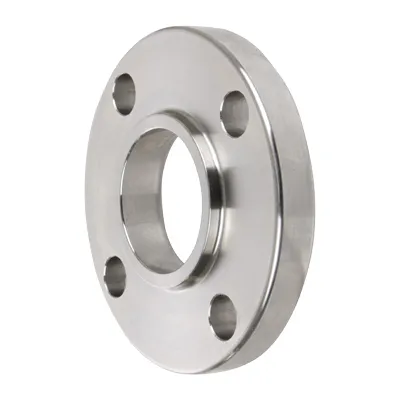-
Cangzhou Yulong Steel Co., Ltd.
-
Phone:
+86 13303177267 -
Email:
admin@ylsteelfittings.com
- English
- Arabic
- Italian
- Spanish
- Portuguese
- German
- kazakh
- Persian
- Greek
- French
- Russian
- Polish
- Thai
- Indonesian
- Vietnamese
- Zulu
- Korean
- Uzbek
- Hindi
- Serbian
- Malay
- Ukrainian
- Gujarati
- Haitian Creole
- hausa
- hawaiian
- Hebrew
- Miao
- Hungarian
- Icelandic
- igbo
- irish
- Japanese
- Javanese
- Kannada
- Khmer
- Rwandese
- Afrikaans
- Albanian
- Amharic
- Armenian
- Azerbaijani
- Basque
- Belarusian
- Bengali
- Bosnian
- Bulgarian
- Catalan
- Cebuano
- China
- China (Taiwan)
- Corsican
- Croatian
- Czech
- Danish
- Esperanto
- Estonian
- Finnish
- Frisian
- Galician
- Georgian
- Kurdish
- Kyrgyz
- Lao
- Latin
- Latvian
- Lithuanian
- Luxembourgish
- Macedonian
- Malgashi
- Malayalam
- Maltese
- Maori
- Marathi
- Mongolian
- Myanmar
- Nepali
- Norwegian
- Norwegian
- Occitan
- Pashto
- Dutch
- Punjabi
- Romanian
- Samoan
- Scottish Gaelic
- Sesotho
- Shona
- Sindhi
- Sinhala
- Slovak
- Slovenian
- Somali
- Sundanese
- Swahili
- Swedish
- Tagalog
- Tajik
- Tamil
- Tatar
- Telugu
- Turkish
- Turkmen
- Urdu
- Uighur
- Welsh
- Bantu
- Yiddish
- Yoruba

Nov . 09, 2024 22:41 Back to list
Different Flange Types Utilized in the Oil and Gas Sector for Various Applications
Types of Flanges Used in the Oil and Gas Industry
In the oil and gas industry, the effective transportation of fluids is paramount. Flanges play a critical role in connecting pipes, valves, pumps, and other equipment, ensuring a tight seal that prevents leaks and maintains system integrity. Given the industry's specific requirements, various types of flanges are utilized based on material, pressure rating, and application. This article will explore some of the most common flange types and their uses in the oil and gas sector.
1. Weld Neck Flange
One of the most frequently used flanges in the oil and gas industry is the weld neck flange. This type features a tapered hub that is welded to the pipe for a strong and robust connection. The weld neck flange is designed to handle high-pressure and temperature conditions, making it suitable for critical applications. It is often used in piping systems that require a seamless transition from the flange to the pipe, which reduces stress concentration and enhances the overall performance of the system.
2. Slip-On Flange
The slip-on flange is another common type found in oil and gas facilities. As the name suggests, it slips over the pipe and is then welded both on the inside and outside to secure it in place. This design simplifies installation and makes it easier to align the flanges. Slip-on flanges are typically used in low-pressure applications where cost-effectiveness is a priority. However, they may not be suitable for high-pressure or high-temperature environments due to their less robust design compared to weld neck flanges.
3. Blind Flange
Blind flanges are used to seal the end of a piping system, preventing the flow of fluids. They have no hole at the center and serve primarily as a closure for pipelines, pressure vessels, and other equipment. In the oil and gas industry, blind flanges are particularly useful in situations where future access to the piping system is anticipated, allowing for maintenance or modifications without needing complete disassembly. They are often used in conjunction with other flanges to create a more comprehensive system.
types of flanges used in oil and gas industry

Socket weld flanges are designed for applications involving high pressures and temperatures. They consist of a socket into which the pipe is inserted, followed by welding at the joint. This flange type ensures a strong, leak-proof connection suitable for small-diameter pipes and high-pressure systems. Socket weld flanges are commonly used in the oil and gas sector for their resilience and ability to endure extreme conditions.
5. Threaded Flange
Threaded flanges, also known as screwing flanges, have internal threads that allow them to be attached to a pipe with matching external threads. They are typically used in low-pressure applications where welding is not feasible. Their ability to be easily assembled and disassembled makes them a practical choice for temporary equipment or piping systems that require frequent maintenance. However, threaded flanges are generally not recommended for high-pressure applications due to their potential for leakage.
6. Lap Joint Flange
Lap joint flanges are used in conjunction with a stub end, allowing for easy alignment and disassembly. They are often used in applications where frequent maintenance is required. This type of flange allows for a degree of flexibility, making it easier to fit together. In the oil and gas industry, lap joint flanges are suitable for systems that are subject to thermal expansion and contraction.
Conclusion
Flanges are an essential component in the oil and gas industry, playing a crucial role in ensuring the safe and efficient transport of fluids. The selection of the appropriate flange type depends on several factors, including pressure, temperature, and material compatibility. Understanding the different types of flanges, such as weld neck, slip-on, blind, socket weld, threaded, and lap joint, can significantly impact the performance and reliability of piping systems. As technology and industry standards evolve, ongoing advancements in flange design and manufacturing will continue to support the dynamic needs of the oil and gas sector.
Latest news
-
ANSI 150P SS304 SO FLANGE
NewsFeb.14,2025
-
ASTM A333GR6 STEEL PIPE
NewsJan.20,2025
-
ANSI B16.5 WELDING NECK FLANGE
NewsJan.15,2026
-
ANSI B16.5 SLIP-ON FLANGE
NewsApr.19,2024
-
SABS 1123 FLANGE
NewsJan.15,2025
-
DIN86044 PLATE FLANGE
NewsApr.19,2024
-
DIN2527 BLIND FLANGE
NewsApr.12,2024
-
JIS B2311 Butt-Welding Fittings LR/SR 45°/90° /180°Seamless/Weld
NewsApr.23,2024











